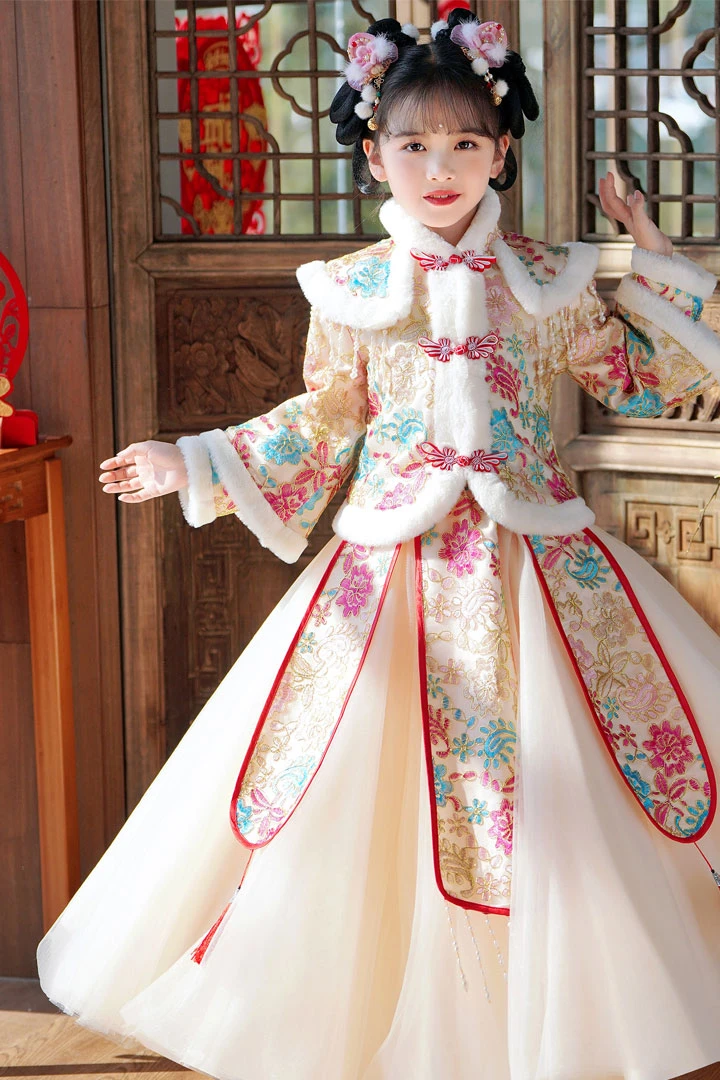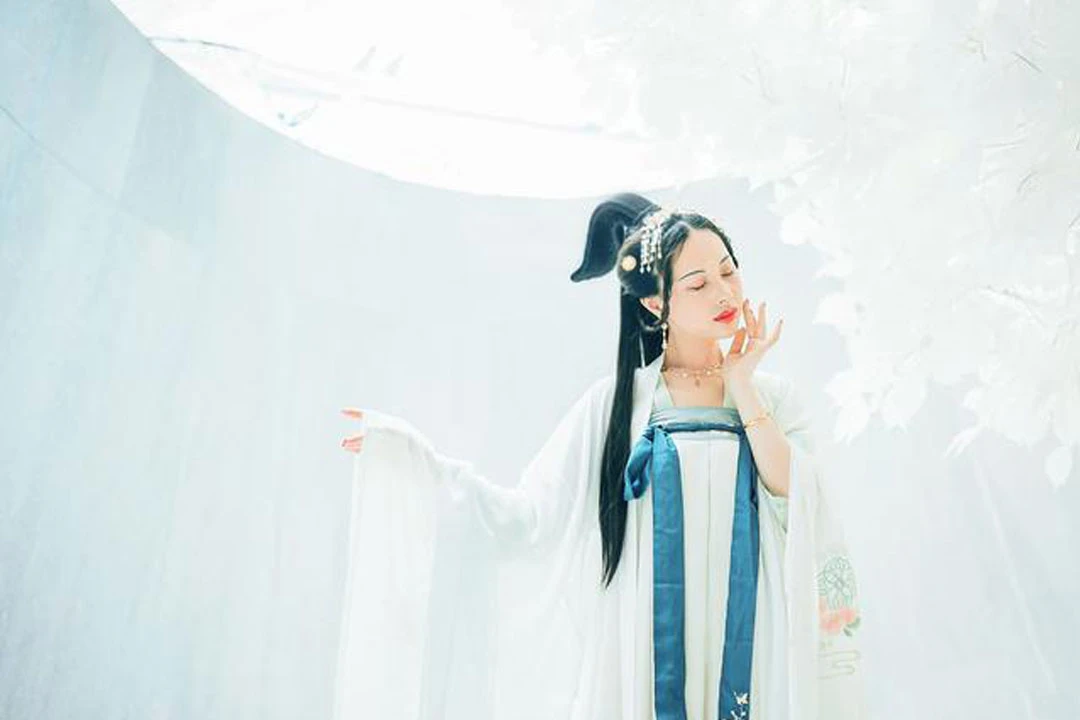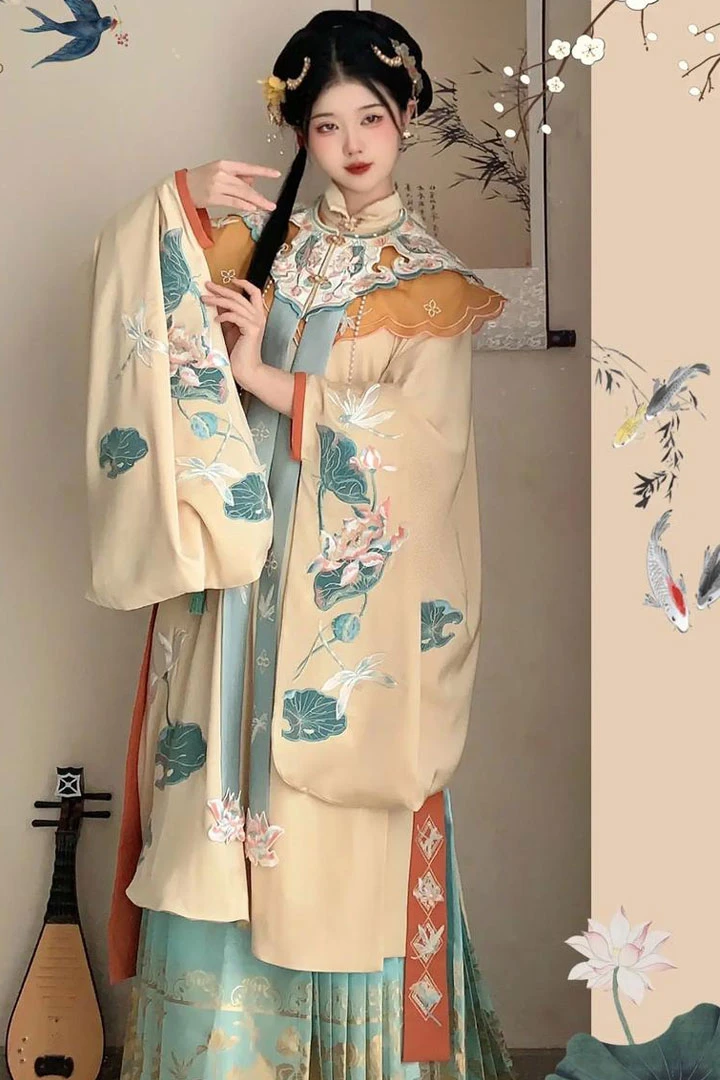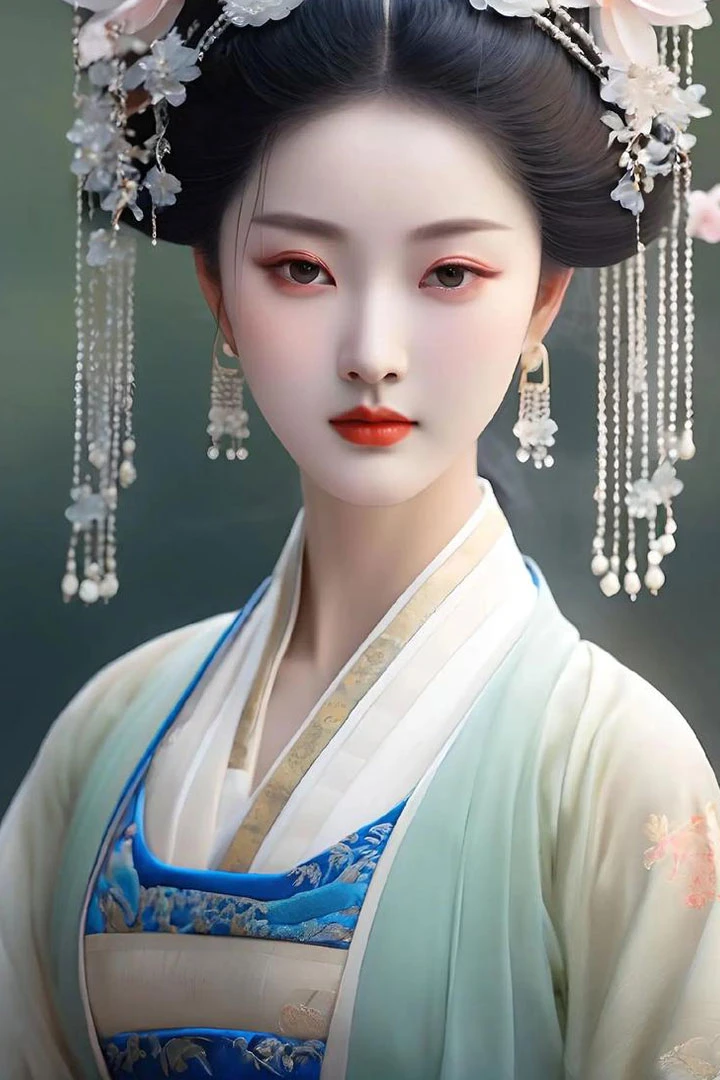A fascinating trend has emerged among young men and women who are embracing traditional Chinese cultural elements in their fashion choices. From T-shirts adorned with calligraphy, seals, and classical Chinese landscape paintings to the resurgence of traditional garments like qipao, hanfu, and horse-face skirts, these styles are gaining popularity among the youth.
Elements such as embroidery, traditional buttons, and overlapping fronts are seamlessly integrated into daily wear, marking a significant shift in wardrobe choices among the younger generation.

Cultural Renaissance in Fashion
The phenomenon of "national style dressing" or "neo-Chinese style" has swiftly captivated the imagination of today's youth. It represents more than just a shift in fashion; it signifies a cultural renaissance rooted in confidence and a renewed appreciation for heritage. By incorporating traditional Chinese elements into their attire, young people are not only making a fashion statement but also expressing cultural pride and identity.
Behind the transformation of young people's wardrobes lies a deeper societal shift towards cultural confidence and enhanced consumer awareness. These fashion choices reflect a desire among the youth to reconnect with their cultural roots and embrace traditions that resonate with contemporary sensibilities. Whether it's wearing a T-shirt with a classical Chinese motif or donning intricate hanfu for a special occasion, these choices symbolize a blend of modernity with a deep-seated respect for tradition.
Cultural Symbols in Everyday Fashion
The incorporation of traditional Chinese symbols and designs into everyday fashion serves as a testament to the enduring appeal of Chinese cultural heritage. Each piece of clothing becomes a canvas that tells a story of artistic expression and cultural continuity. For instance, the resurgence of qipao and hanfu among young women highlights their timeless elegance and the evolving reinterpretations of traditional fashion in a modern context.
The trend towards embracing Chinese cultural fashion not only influences individual style but also holds broader implications for economic and social development. It fosters a vibrant market for traditional crafts and textiles, creating opportunities for artisans and designers specializing in cultural fashion. Moreover, it promotes sustainable consumption practices by encouraging consumers to appreciate quality craftsmanship and heritage-inspired designs.
At its core, the embrace of Chinese cultural fashion reflects a growing sense of cultural confidence and identity among the younger generation. By wearing garments that celebrate Chinese traditions, young people assert their unique cultural identity while contributing to a global dialogue on cultural diversity and inclusivity. This cultural pride not only enriches personal style but also strengthens societal bonds through shared heritage and collective appreciation.
Looking Ahead: Future Trends and Innovations
As the popularity of Chinese cultural fashion continues to grow, future trends are likely to focus on innovation and sustainability. Designers may explore new techniques to integrate traditional motifs with contemporary aesthetics, catering to diverse consumer preferences and global markets. Innovations in textile technology and sustainable fashion practices will further enhance the appeal of cultural fashion, ensuring its longevity in an evolving fashion landscape.
The resurgence of Chinese cultural fashion among young people represents more than just a trend; it embodies a profound shift towards cultural appreciation and heritage preservation. As traditional garments like qipao, hanfu, and horse-face skirts gain popularity, they serve as cultural ambassadors that bridge the gap between past traditions and contemporary lifestyles.
One of the significant impacts of the cultural fashion movement is its role in preserving and promoting Chinese cultural heritage. Traditional garments are not merely pieces of clothing; they carry centuries-old craftsmanship, symbolism, and historical significance. By wearing and showcasing these garments in everyday life, young people actively participate in the preservation and revitalization of traditional arts and crafts.
For example, the intricate embroidery on hanfu or the elegant simplicity of a qipao both reflect traditional Chinese aesthetics and craftsmanship. These elements not only enhance the visual appeal of the garments but also convey stories of cultural identity and heritage to a global audience. As such, cultural fashion becomes a powerful tool for cultural diplomacy, fostering cross-cultural understanding and appreciation.
Economic Opportunities and Market Trends
The popularity of Chinese cultural fashion also opens up new economic opportunities, particularly in the realm of artisanal craftsmanship and cultural tourism. Artisans specializing in traditional embroidery, weaving, and dyeing techniques find renewed demand for their skills, catering to a growing market of consumers seeking authenticity and cultural depth in their fashion choices.
Furthermore, the rise of cultural tourism centered around traditional fashion hotspots like Beijing, Shanghai, and Xi'an provides economic stimulus to local economies. Visitors flock to these cities not only to admire historical landmarks but also to participate in cultural experiences such as wearing hanfu for photoshoots in ancient palaces or exploring traditional markets for handmade textiles.
Beyond China's borders, the appeal of Chinese cultural fashion resonates with global audiences interested in diverse and meaningful fashion expressions. International fashion weeks increasingly feature designers incorporating Chinese motifs and styles into their collections, highlighting the global relevance of Chinese cultural heritage in the fashion industry.
For instance, fashion houses and designers often draw inspiration from Chinese architecture, landscapes, and artistic traditions to create modern interpretations of traditional attire. This fusion of East and West not only enriches global fashion aesthetics but also promotes cultural exchange and mutual respect among nations.
Educationally, the resurgence of Chinese cultural fashion encourages deeper exploration and understanding of Chinese history and traditions among younger generations. Schools and universities integrate cultural fashion workshops and seminars into their curricula, fostering a sense of pride and identity among students while promoting cultural diversity.
Moreover, cultural fashion events and exhibitions serve as platforms for dialogue on sustainability, ethical fashion practices, and the importance of preserving cultural heritage. They raise awareness about the environmental impact of fashion production and consumption, encouraging consumers to make informed choices that support traditional craftsmanship and sustainable fashion initiatives.
In conclusion, the resurgence of Chinese cultural fashion among young people underscores a global movement towards embracing tradition in a rapidly evolving world. By integrating traditional garments and motifs into contemporary lifestyles, individuals affirm their cultural roots while contributing to a broader narrative of cultural heritage preservation and global cultural exchange.
As the popularity of Chinese cultural fashion continues to grow, its impact on fashion trends, economic development, and cultural diplomacy will be increasingly significant. By celebrating and innovating upon traditional aesthetics, designers, consumers, and cultural enthusiasts alike pave the way for a future where heritage and modernity coexist harmoniously in the realm of fashion and beyond.



